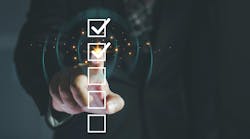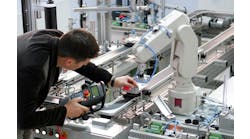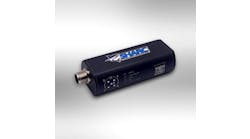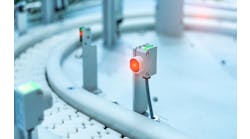Testing and verification of position sensors are crucial steps to ensure their accuracy, reliability and compliance with specifications. The process typically involves a series of tests to validate the sensor's performance under various conditions. The process for position sensor testing and verification can be broken down into steps.
Preparation: Review the manufacturer's specifications, datasheets and documentation to understand the sensor's expected performance, operating conditions and calibration requirements. Develop a comprehensive test plan outlining the specific tests to be conducted, acceptance criteria and testing procedures.
Initial inspection: Inspect the sensor visually for any physical damage or irregularities. Ensure that all components are securely connected and properly installed.
Functional testing: Apply power to the sensor and verify that it initializes correctly without any errors or malfunctions. Verify that the sensor produces the expected output signals corresponding to different positions or movements.
Calibration verification: Confirm that the sensor properly calibrates to its zero position or reference point. Verify the sensor's accuracy at the full range of motion. Check for linearity and repeatability.
Environmental testing: Test the sensor's performance at various temperatures within its specified operating range. Assess the sensor's performance under different humidity levels, especially if it will be exposed to varying environmental conditions.
Mechanical stress testing: Subject the sensor to controlled vibrations to simulate real-world conditions. Verify that the sensor maintains accuracy and stability. Apply controlled shocks to the sensor to simulate impacts. Ensure that the sensor remains operational and accurate.
Electromagnetic interference (EMI) testing: Expose the sensor to electromagnetic fields to assess its susceptibility to interference. Verify that the sensor's performance is not significantly affected.
Long-term stability testing: Run the sensor continuously for an extended period to evaluate its long-term stability and performance under continuous use.
Dynamic response testing: Assess the sensor's response time and accuracy at different speeds and acceleration levels. Analyze how quickly the sensor responds to sudden changes in position.
Accuracy and resolution testing: Measure the sensor's accuracy by comparing its output to a known reference position. Evaluate the sensor's ability to detect small changes in position and test resolution.
Cross-talk and interference testing: Assess if there is any interference between multiple sensors or other electronic components. Expose the sensor to external sources of interference to evaluate its resilience.
Documentation and reporting: Record data from each test, including sensor output, environmental conditions and any anomalies observed. Summarize the results, highlighting any deviations from expected performance. Include recommendations for calibration or adjustments, if needed.
Compliance certification: Ensure that the sensor meets relevant industry standards and specifications. Obtain certification, if required, for the specific application or industry.
Calibration and adjustment
Calibrating position sensors in an industrial setting is crucial to ensure accurate and reliable measurements. The calibration process involves adjusting the sensor output to match the true position of the target or element being measured.
Understand manufacturer guidelines: Familiarize yourself with the manufacturer's guidelines and specifications for calibration. Follow the recommended procedures and use any calibration tools or software provided.
Prepare the system: Ensure the sensor is properly installed according to the manufacturer's instructions. Connect the sensor to the control system and power it up. If applicable, set up any associated software or instrumentation for calibration.
Establish a reference point: Identify a reference point or position that is known and can be accurately measured. This could be a physical reference point or a specific position in the industrial process.
Record initial readings: Take initial readings from the position sensor at the reference point. Record these readings for comparison after calibration.
Adjust output signals: Use the calibration tools or software to adjust the output signals of the sensor. This may involve modifying offset, gain or other parameters to align the sensor readings with the true position.
Perform iterative adjustments: Iteratively adjust the sensor output and compare the readings with the true position until the desired level of accuracy is achieved. Some calibration processes involve multiple iterations to fine-tune the sensor performance.
Verify across the range: Check the sensor's performance at various points across its measurement range. Ensure that the calibration remains accurate and consistent throughout the entire range of motion.
Document calibration parameters: Once the calibration is complete, document the calibration parameters and settings used. This documentation is crucial for future reference, troubleshooting and maintenance.
Perform functional tests: Conduct functional tests to ensure that the calibrated sensor operates correctly within the industrial process. Verify that the sensor responds accurately to changes in position and provides reliable data to the control system.
Final verification: Revisit the reference point and compare the sensor readings with the known position. Confirm that the sensor provides accurate and reliable measurements after calibration.
Establish calibration schedule: Establish a routine calibration schedule based on the sensor's specifications and the industrial application's requirements. Regularly recalibrate the sensor to maintain accuracy over time.
Comply with standards: If applicable, ensure that the calibration process complies with relevant industry standards and regulations.





